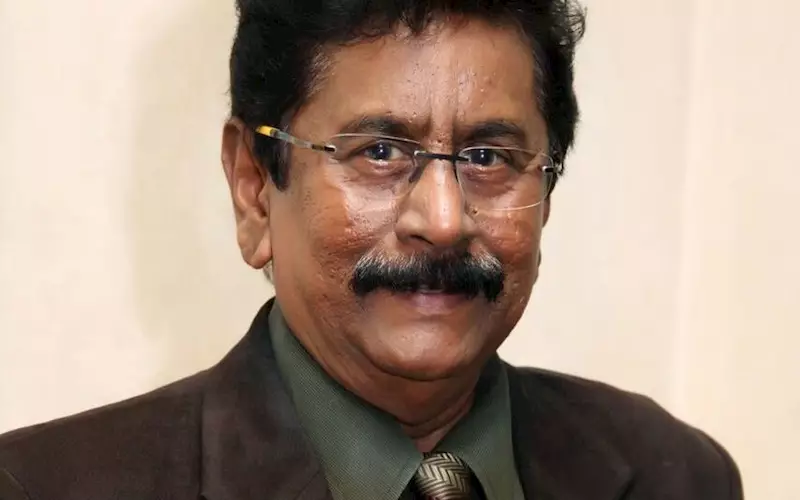AIFMP president boosts print education in Chennai
Dev Nair, president of the All India Federation of the Master Printers (AIFMP) spoke at three institutes in Chennai on 12 March. Accompanying him at the Selation Institute of Graphic Arts (Don Bosco), Anna University and IPT were Dr S Ganeshan, HOD Dr Rajeswari, AIFMP Vice President K C Prakash, and students' secretary, Arunkumar.
13 Mar 2015 | By Samir Lukka
The president of AIFMP also stated that he has, "Requested the registrar Dr Siddharth and the HOD Dr Rajeswari to take this forward."
During his speech in all institutes, Nair explained that the AIFMP had submitted a memorandum requesting the Government of India to allocates Rs 100 crore ie Rs 5 crore each for 20 printing institute across India in order to introduce new machines which can develop skilled workers for the industry.
Nair reached out to the students during his when he said, "In college we spend 10% of our time on studies; and 90% of our time on other things." He advised the students, "If you can change that to 20% to 80%, you can make a big difference."
After which he added, that these days with print, there is a lots of theoretical mystification. His advise, "The best thing is to visit print plants and understand the best practices on the shopfloor."
Nair told the gathering that it is imperative to measure quality.
He explained, "Everyone has an opinion about quality because it is so easy to talk about it. Trying to define quality is something else. It is like trying to define beauty. “Beauty is truth, truth beauty -- that is all Ye know on earth, and all ye need to know,” the poet tells us. So let’s speak the facts about quality."
He explained how 30 years ago, quality was measured as 300 dpi. Today that number has changed. Find out the reasons for this change!
He spent a lot of time explaining how in today's day and age, print is only 30-40% of the total product component. There are other assets like the data. So where are the measurables in such a module for companies like Seshasai and Mail Order Solution? He spoke of the largest online print company in the world, Vistaprint (USD 1.4 billion), is 2% of the largest online e-commerce company.
Nair told the students, not to think "small", but to scale up. He explained, "Models are the same, but our industry is very capital intensive."
He explained, "So, the Capex to turnover ratio is just 1.5 times, whereas it is three times in other industries. There is a stiff competition in the market. Every day, new units emerge and shut down. The process of shutting down a business is slow, as the owners continue to struggle for survival."
Going forward, he told the students to understand that consolidation will happen not only in the print industry, but also in every other industry. This is because, as Nair opined, smaller players will not be able to sustain.
His cry was: Today's print firm firms will have to scale up, or print firms will fail to survive.
He gave an example, "Two years ago, raw material has seen a 50-70%% increase. With this, working capital, debt and everything else increases by 50%. How can you sustain 50% working capital? This is why scalability is required, and this is why consolidation will happen."
He mentioned the billion dollar mergers in packaging which was reported in PrintWeek India.
Dev Nair extolled the students to think out of the box and look at the other side of the fence at "print buyers".
Even in this he stated, there are two types of print buyers.
One is the multinational lot, who bring international experience to India and tell printers on what they want.
Print firms in India do a lot of work with Indian customers and try to bring in new technologies available. Usually, they try to adopt what their competition or the multinationals are doing.
Sometimes, the international buyers have multiple layers of decision-making process. Their principals have to approve every millimetre of the design. I am not sure whether this is good for India or not, but they are here.
He told the students that they can be a print manager or production in-charge with these super brands.
In the pursuit of print supremacy he requested students to spend a bit of time researching and analysing excise duty and sales tax and GST. Since ultimately it is all about the P&L.
He concluded his speech by extolling the students to focus on the three Ps of printing. These are: Passion, perseverance and perfection.
Nair told PrintWeek India that he was impressed with "the production facility of Selation. They have six printing machines, and complete binding dept-including section-sewing. It was an eye opener for me."














 See All
See All